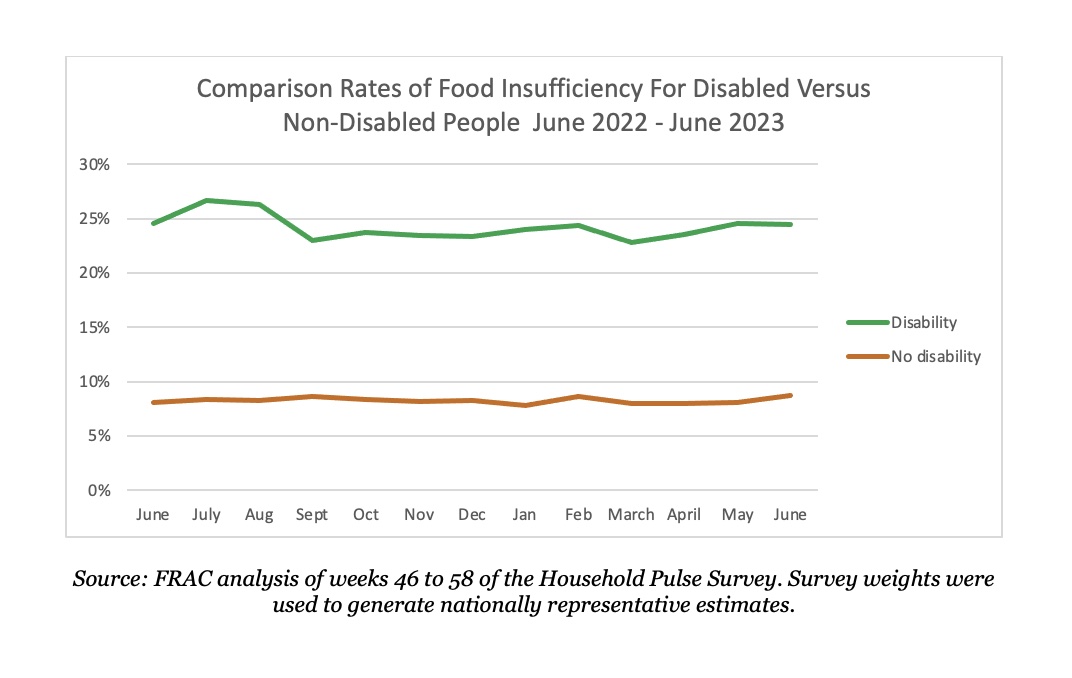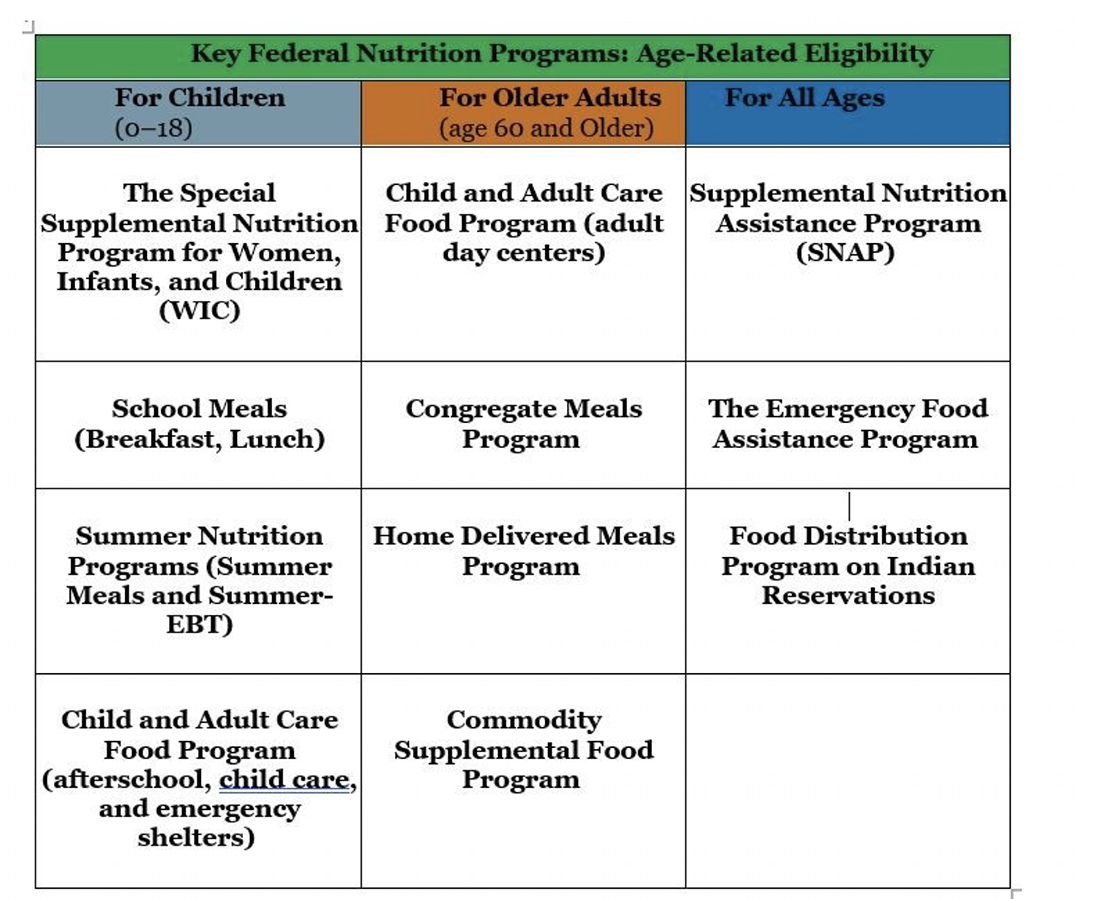July 26, 2023
In recognition of the 33rd anniversary of the signing of the Americans with Disabilities Act (ADA), it’s time to double down on realizing the law’s goal of prohibiting discrimination against people with disabilities in all areas of public life. While there has been great progress, much work remains to achieve the goal of economic security and justice for disabled people in the U.S. Ensuring that all disabled people have access to the nutrition they need to thrive is foundational to this goal.
Improving access to and strengthening the federal nutrition programs is a key strategy to help address the alarming rates of hunger among people with disabilities. These programs are our nation’s most important, proven, and cost-effective public interventions to address food insecurity.
They also have a range of other positive benefits, including alleviating poverty; improving dietary intake and nutrition; and supporting positive health outcomes, academic achievement, and early childhood development. Yet too many eligible people with disabilities and their families who are struggling to put food on the table are left underserved by these programs.
Research underscores how households with a member who has a disability face disproportionately higher rates of food insecurity compared to households where no household member has a disability. In 2021, 28 percent of households that included an adult who was out of the labor force because of a disability were food insecure.
A FRAC analysis of more recent data from the Census Bureau Household Pulse Survey showed substantial and consistent disparities in rates of food insufficiency (sometimes or often not having enough to eat) among disabled people compared to non-disabled peoples from June 2022 to June 2023. “Disabled people” included survey participants who indicated that they either had a lot of difficulty or were unable to function in at least one of the following areas: seeing, hearing, cognition, mobility, self-care, or communication.
In June 2023, 24 percent of disabled people experienced food insufficiency compared to 9 percent of non-disabled people. While there was some variation in rates across the period of June 2022 to June 2023, what was consistent were the dramatically higher rates of food insufficiency reported by disabled people.

The chart below highlights the federal nutrition programs that disabled people and their families can access to not only improve their food insecurity but also to improve their nutrition, health, and well-being:

Take action in honor of the signing of the ADA to further realize economic security and justice for disabled people:
- Connect people with disabilities and their families to federal nutrition programs: Check out resource materials from FRAC. Learn more about disability compliance and protections and how state agencies and local agencies must ensure equal access to federal nutrition programs for persons with disabilities.
- Urge Congress to strengthen SNAP in the Farm Bill as part of a comprehensive strategy to promote disability economic justice: Check out a recent webinar, co-sponsored by FRAC and the Disability Economic Justice Collaborative (DEJC) that discusses best practices to engage the disability community in the Farm Bill debate for authentic and inclusive advocacy.
- Connect with the Disability Economic Justice Collaborative: As effective as the nutrition programs are, they alone cannot achieve economic justice for people with disabilities. That’s why FRAC is a member of the DEJC, which brings together organizations that focus on economic policy issues with disability rights and justice organizations to advance disability economic justice in the U.S. and center the voices and experiences of people with disabilities. Sign up for DEJC’s newsletter and read about the Voices of Economic Justice.


